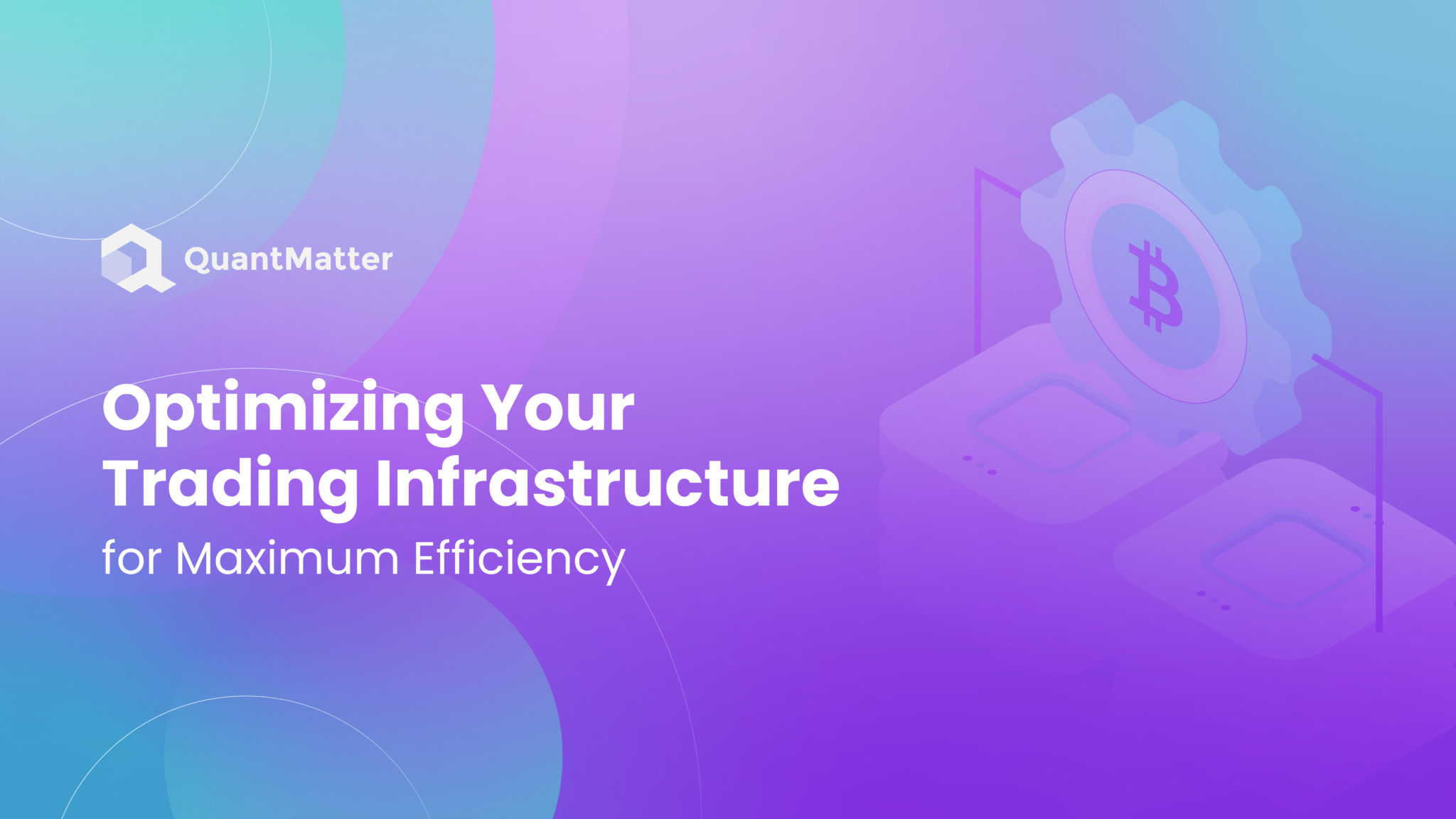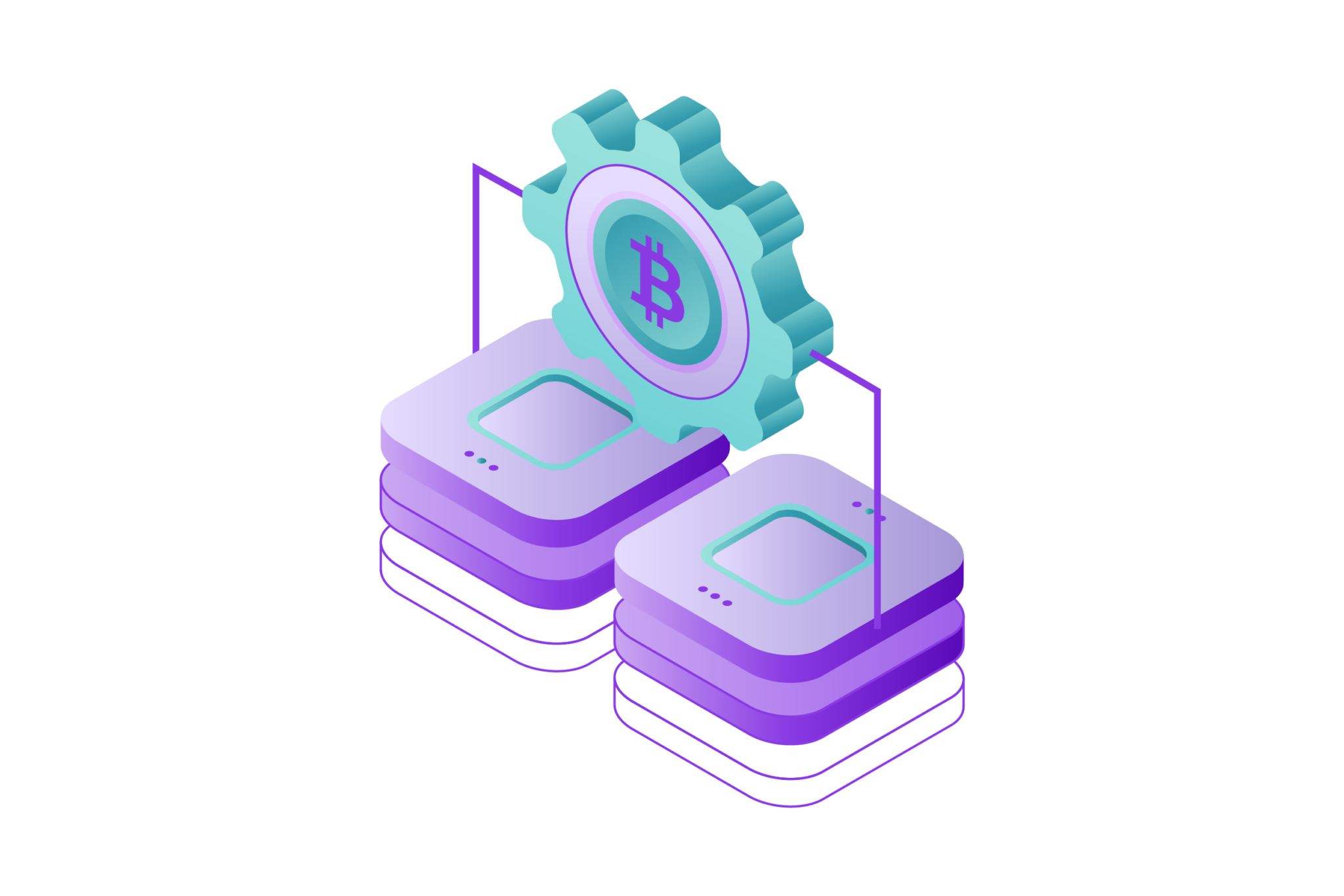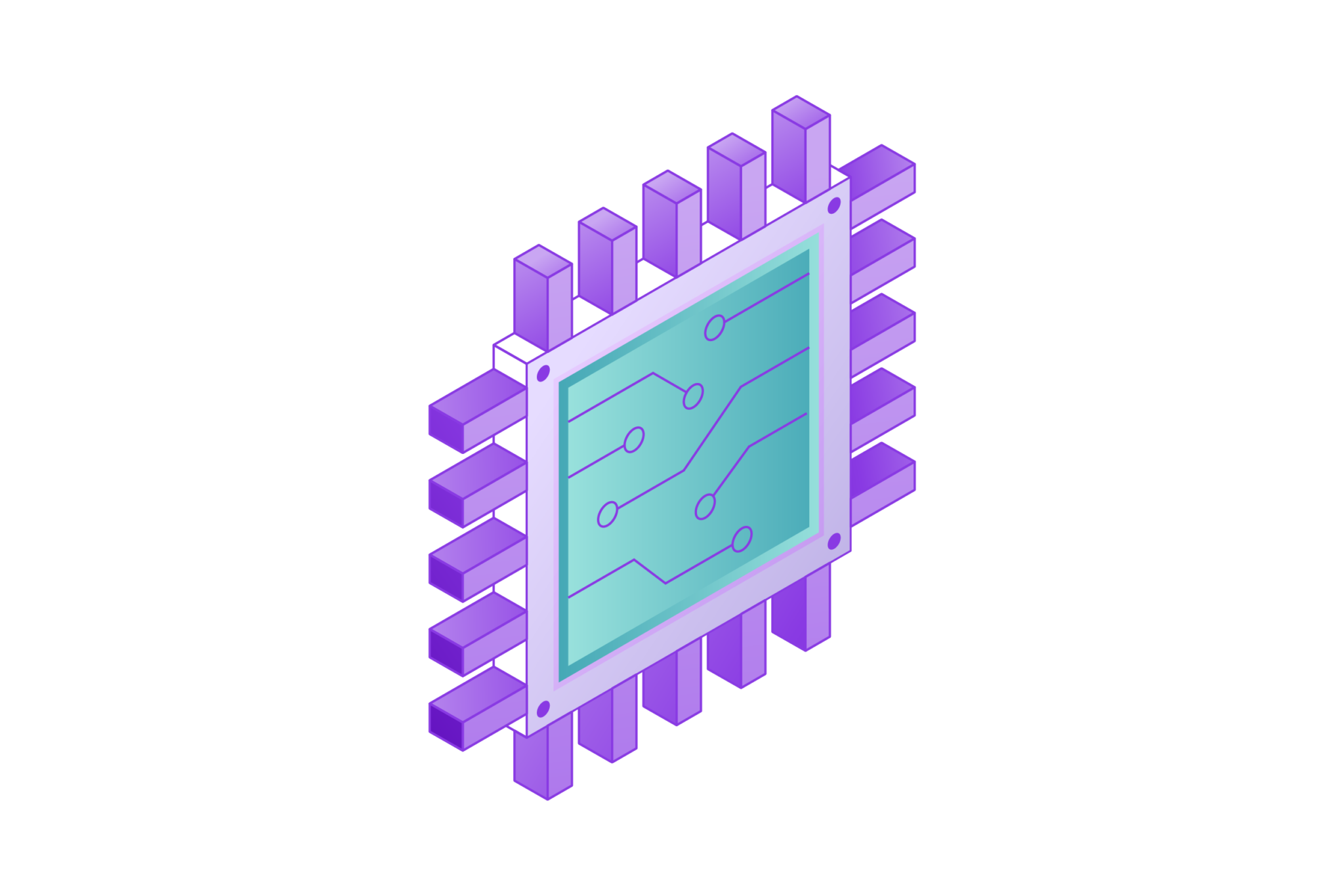
In the fast-paced world of trading, having a robust and efficient trading infrastructure is crucial for success. Whether you’re a seasoned trader or just starting, optimizing your trading setup can make a significant difference in your performance and profitability. This article will guide you through the essential components and strategies to enhance your trading infrastructure.
A well-optimized trading infrastructure ensures that you can execute trades swiftly, analyze market data accurately, and manage risks effectively. From hardware and software to network connectivity and data management, every aspect plays a vital role in creating a seamless trading experience. By focusing on these key areas, you can minimize downtime, reduce latency, and increase your overall trading efficiency.
Understanding the importance of a reliable trading infrastructure is the first step toward achieving your trading goals. In the following sections, we’ll delve into specific tips and techniques to help you build and maintain an optimized trading environment. Let’s explore how you can enhance your trading setup to stay ahead in the competitive trading landscape.
Understanding Trading Infrastructure

Trading infrastructure refers to the combination of hardware, software, and network resources used to execute trades and manage trading activities. It encompasses everything from the physical components like computers and servers to the software applications and network connections that facilitate trading operations. A strong trading infrastructure is the backbone of any successful trading strategy.
What is Trading Infrastructure?
At its core, trading infrastructure includes all the essential tools and technologies that enable traders to conduct their activities efficiently. This infrastructure supports the entire trading process, from the initial market analysis to the final execution of trades. A well-integrated system ensures smooth operation, minimizes errors, and enhances the overall trading experience.
Also Read: How Market Making Algorithms Works? The Future Of Crypto
Importance of Robust Infrastructure
A robust trading infrastructure is crucial for several reasons. First, it ensures that traders can access and process market information in real-time, which is vital for making informed decisions. Second, it reduces latency, allowing for quicker execution of trades. This is particularly important in high-frequency trading, where even milliseconds can make a significant difference. Finally, a reliable infrastructure minimizes downtime, which can otherwise lead to missed opportunities and financial losses.
Components of Trading Infrastructure
Trading infrastructure consists of various components that work together to support trading activities. These include:
- Hardware: Trading computers, servers, and monitors.
- Software: Trading platforms, charting tools, and risk management systems.
- Network: Internet connectivity, routers, and switches.
- Data Management: Databases, data feeds, and security systems.
Essential Hardware Components

The hardware components of your trading infrastructure play a critical role in ensuring that you can execute trades efficiently and effectively. A well-equipped trading setup can significantly enhance your trading performance by providing the necessary power and reliability.
Trading Computers
A high-performance trading computer is the foundation of your trading infrastructure. Unlike standard computers, trading computers need to handle multiple applications and large datasets simultaneously without lag. Here are some key features to consider when selecting a trading computer:
- Processor (CPU): Look for a multi-core processor with high clock speeds to ensure that your computer can handle intensive trading software and data processing tasks.
- Memory (RAM): Aim for at least 16GB of RAM to allow for smooth multitasking and quick access to large datasets.
- Storage: Choose a Solid State Drive (SSD) for faster boot times and data access compared to traditional Hard Disk Drives (HDD).
Monitors
Having multiple monitors is essential for traders who need to keep an eye on various markets and data feeds simultaneously. This setup allows you to spread out your charts, trading platforms, and news feeds, providing a comprehensive view of the market. Consider the following when setting up your monitors:
- Size and Resolution: Larger monitors with higher resolutions allow you to display more information without straining your eyes.
- Number of Monitors: Depending on your trading style, having 2 to 6 monitors can help you monitor multiple markets and execute trades more efficiently.
- Mounts and Stands: Use adjustable mounts and stands to position your monitors ergonomically, reducing neck and eye strain.
Servers
For more advanced traders, especially those engaged in algorithmic or high-frequency trading, having a dedicated server can offer significant advantages. Servers provide additional processing power and reliability, ensuring that your trading operations run smoothly even during peak market hours. Key considerations include:
- Location: Placing your server close to your broker’s data center can reduce latency, providing faster trade execution.
- Redundancy: Implementing redundant systems (e.g., backup servers) can help ensure continuous operation in case of hardware failures.
Choosing the Right Software

Selecting the right software is crucial for optimizing your trading infrastructure. The software you use can significantly impact your trading efficiency, accuracy, and overall success. Here are key types of software you should consider integrating into your trading setup:
Trading Platforms
A reliable trading platform is the cornerstone of your trading operations. It provides the interface through which you execute trades, monitor markets, and manage your portfolio. When choosing a trading platform, consider the following features:
- User-Friendly Interface: The platform should be intuitive and easy to navigate, allowing you to execute trades quickly and efficiently.
- Advanced Charting Tools: Look for platforms that offer comprehensive charting tools with various technical indicators and drawing tools to aid in your market analysis.
- Order Types: Ensure the platform supports multiple order types (e.g., market orders, limit orders, stop-loss orders) to give you flexibility in your trading strategies.
- Execution Speed: The platform should provide fast and reliable trade execution to minimize slippage and take advantage of market opportunities.
Charting Tools
In addition to the basic charting tools offered by trading platforms, you might need more advanced charting software for in-depth technical analysis. These tools can help you identify trends, patterns, and key market levels. Key features to look for include:
- Customizable Indicators: The ability to create and customize indicators tailored to your trading strategies.
- Backtesting Capabilities: Tools that allow you to test your trading strategies on historical data to evaluate their performance before applying them in live markets.
- Real-Time Data: Ensure the charting software provides real-time market data for accurate analysis.
Risk Management Systems
Effective risk management is vital for long-term trading success. Risk management software helps you monitor and control your exposure to various risks, ensuring that you adhere to your trading plan and risk tolerance levels. Features to consider include:
- Position Sizing: Tools that help you calculate the appropriate position size based on your risk tolerance and account size.
- Stop-Loss and Take-Profit Management: Automated systems that allow you to set stop-loss and take-profit levels to protect your capital and lock in profits.
- Risk Analytics: Advanced analytics that provide insights into your risk exposure and the potential impact of market movements on your portfolio.
Integration and Customization
To achieve maximum efficiency, it’s important that your software solutions integrate seamlessly with each other. Look for software that offers:
- API Access: Application Programming Interfaces (APIs) that allow different software to communicate and share data.
- Customization Options: The ability to customize the software to fit your specific trading needs and preferences.
- Compatibility: Ensure the software is compatible with your existing hardware and other software tools.
Ensuring Reliable Network Connectivity
Network connectivity is a vital component of your trading infrastructure. A stable and fast internet connection ensures that you can execute trades quickly and receive real-time data without delays. Poor connectivity can lead to latency issues, which may result in missed trading opportunities or unfavorable trade executions. Here are some key considerations for ensuring reliable network connectivity:
High-Speed Internet
A high-speed internet connection is essential for active traders. It allows you to access market data in real-time and execute trades promptly. When choosing an internet service provider (ISP), consider the following factors:
- Bandwidth: Higher bandwidth allows for faster data transfer, reducing latency. Aim for at least 100 Mbps download speed for optimal performance.
- Reliability: Choose an ISP known for its reliability and minimal downtime. Check customer reviews and service guarantees.
- Fiber Optic Connection: Fiber optic internet offers faster speeds and more reliable connectivity compared to DSL or cable internet.
Redundant Connections
To minimize the risk of connectivity issues, consider having a backup internet connection. Redundant connections ensure that if one internet line fails, you can quickly switch to the backup without interrupting your trading activities. Options for redundant connections include:
- Secondary ISP: Subscribe to a secondary ISP using a different technology (e.g., fiber optic and 4G/5G) to diversify your risk.
- Mobile Hotspot: Use a mobile hotspot as an emergency backup connection. This can be especially useful during short-term outages.
Network Equipment
The quality of your network equipment can significantly impact your connectivity and trading performance. Invest in high-quality routers and switches to ensure reliable and fast data transmission. Consider the following:
- Router Specifications: Look for routers with high throughput and low latency. Features like Quality of Service (QoS) can prioritize trading traffic over other network activities.
- Wired vs. Wireless: Wired connections (Ethernet) are generally more stable and faster than wireless connections (Wi-Fi). Whenever possible, connect your trading computer directly to the router using an Ethernet cable.
- Uninterruptible Power Supply (UPS): Use a UPS to protect your network equipment from power outages and surges. This ensures continuous operation during short power interruptions.
Latency and Proximity
Latency is the delay between sending a request and receiving a response. In trading, lower latency can provide a significant advantage, especially for high-frequency traders. To reduce latency, consider the following:
- Proximity to Broker’s Server: Choose a broker with servers located close to your geographical location. This can reduce the time it takes for your data to travel to and from the server.
- Direct Market Access (DMA): DMA allows you to place orders directly on the exchange without intermediary delays. This can further reduce latency and improve trade execution speed.
Virtual Private Network (VPN)
Using a VPN can enhance your network security and potentially reduce latency by optimizing your connection route. When choosing a VPN, look for:
- Low-Latency Servers: Select a VPN provider with low-latency servers close to your broker’s servers.
- Security Features: Ensure the VPN offers strong encryption and other security features to protect your trading data.
- Reliability: Choose a VPN provider with a reputation for high reliability and minimal downtime.
Data Management and Security
Effective data management and robust security measures are crucial for maintaining an efficient and secure trading infrastructure. Proper handling of data ensures that you have access to accurate information for making informed trading decisions, while security measures protect your sensitive information from cyber threats.
Data Storage Solutions
Proper data storage is essential for both historical and real-time data. Traders need to store large volumes of data securely and access it quickly. Consider the following storage solutions:
- Solid State Drives (SSD): SSDs offer faster read and write speeds compared to traditional hard drives, ensuring quick access to your data.
- Network Attached Storage (NAS): NAS devices provide a centralized storage solution that can be accessed by multiple devices on your network. They are ideal for backing up and sharing large datasets.
- Cloud Storage: Cloud storage solutions offer scalability and remote access to your data. Ensure your cloud provider offers strong security measures and complies with data protection regulations.
Real-Time Data Management
Managing real-time data efficiently is crucial for executing trades based on the latest market information. This includes:
- Data Feeds: Subscribe to reliable data feed services that provide accurate and timely market data. Ensure that the service has minimal downtime and latency.
- Data Processing: Use advanced data processing tools to analyze real-time data quickly. This can include algorithmic trading systems and AI-based analytics.
- Data Integration: Ensure that your data feeds integrate seamlessly with your trading platform and other software tools.
Data Backup and Recovery
Data loss can be catastrophic for traders. Implementing a robust backup and recovery strategy ensures that you can quickly recover from data loss events. Key considerations include:
- Regular Backups: Schedule regular backups of your trading data, including historical data, trading logs, and configuration files.
- Offsite Backups: Store backups in multiple locations, including offsite or cloud storage, to protect against physical damage to your primary storage.
- Disaster Recovery Plan: Develop a comprehensive disaster recovery plan that outlines the steps to restore your trading operations in case of data loss or hardware failure.
Also Read: 7 Best Quantitative Analysis News to Check this 2024
Cybersecurity Measures
Protecting your trading infrastructure from cyber threats is paramount. Implementing strong cybersecurity measures helps safeguard your data and trading activities. Consider the following:
- Firewalls and Antivirus Software: Use firewalls to block unauthorized access to your network and antivirus software to detect and remove malware.
- Encryption: Encrypt sensitive data both in transit and at rest to prevent unauthorized access. Use secure protocols like SSL/TLS for data transmission.
- Multi-Factor Authentication (MFA): Enable MFA on all your trading accounts and software to add an extra layer of security. This requires users to provide two or more verification factors to gain access.
- Regular Security Audits: Conduct regular security audits to identify and address vulnerabilities in your trading infrastructure. This includes reviewing software updates and patches.
Compliance and Regulatory Considerations
Traders must adhere to various regulatory requirements to ensure their trading activities are compliant. This includes:
- Data Protection Regulations: Ensure that your data management practices comply with relevant data protection regulations, such as GDPR or CCPA.
- Record Keeping: Maintain accurate records of all trading activities and communications for regulatory compliance. Use secure and compliant storage solutions for record-keeping.
Conclusion
Optimizing your trading infrastructure is an ongoing process that requires continuous monitoring and adjustments. By investing in high-quality hardware, choosing the right software, ensuring reliable network connectivity, and implementing strong data management practices, you can create a trading environment that supports your success.
Remember that the trading landscape is constantly evolving, and staying up-to-date with the latest technologies and best practices is crucial. Regularly assess your trading infrastructure and make necessary upgrades to maintain optimal performance.
In conclusion, a well-optimized trading infrastructure can significantly enhance your trading efficiency and profitability. By focusing on the key components discussed in this article, you’ll be better equipped to navigate the complexities of the trading world and achieve your financial goals.
Disclaimer: The information provided by Quant Matter in this article is intended for general informational purposes and does not reflect the company’s opinion. It is not intended as investment advice or a recommendation. Readers are strongly advised to conduct their own thorough research and consult with a qualified financial advisor before making any financial decisions.

Joshua Soriano
As an author, I bring clarity to the complex intersections of technology and finance. My focus is on unraveling the complexities of using data science and machine learning in the cryptocurrency market, aiming to make the principles of quantitative trading understandable for everyone. Through my writing, I invite readers to explore how cutting-edge technology can be applied to make informed decisions in the fast-paced world of crypto trading, simplifying advanced concepts into engaging and accessible narratives.
- Joshua Soriano#molongui-disabled-link
- Joshua Soriano#molongui-disabled-link
- Joshua Soriano#molongui-disabled-link
- Joshua Soriano#molongui-disabled-link
